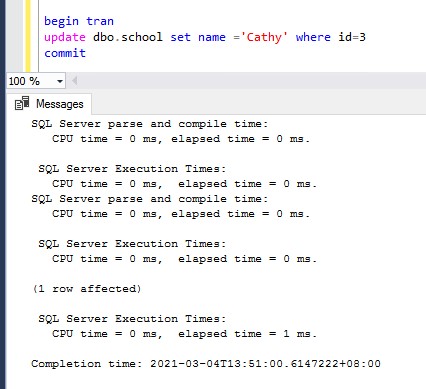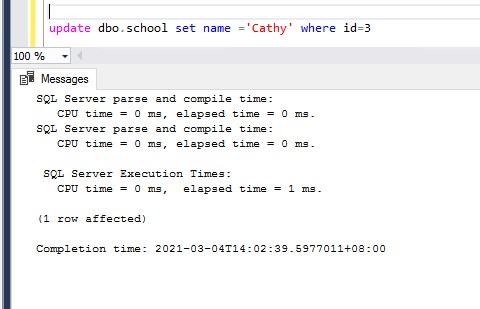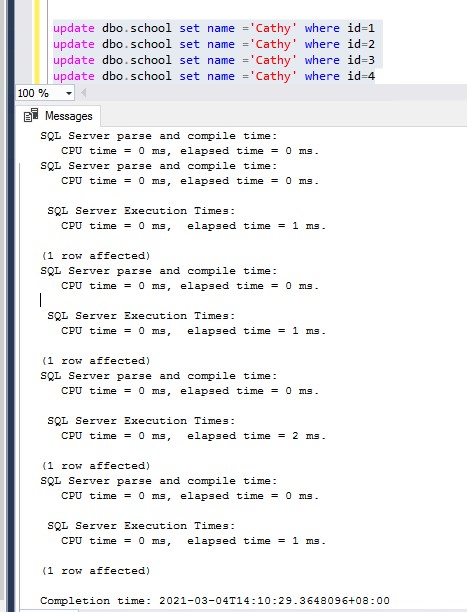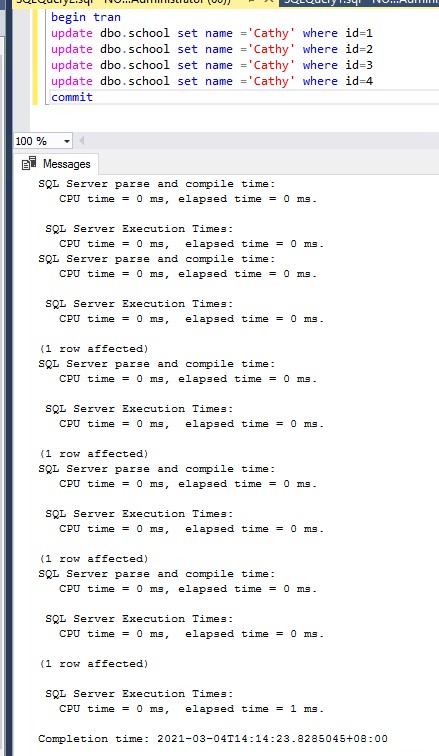if there is a simple sql command
update foo
set col A = null where col A = Test
begin tran
update foo
set col A = null where col a = test
commit
the second sql should take much less time because the commit is performed after all the rows are updated not every row is committed. the first sql query commits very row and is slower, is my understanding correct





